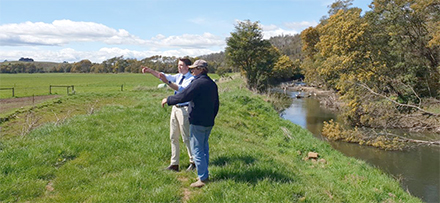
People in Victoria’s regions are far more interested maintaining jobs and economic opportunities from the state’s forests than people in the city, according to early feedback from the Future of Our Forests program. The RFA modernisation process is an integral part of the program. Source: Philip Hopkins for Timberbiz
When asked ‘How the forest should be managed’, people living in regional areas rates jobs and economic opportunities more highly than people living in the Metropolitan Melbourne area, the RFA Feedback Report – Phase 1 Engagement shows.
However, most respondents believed that timber harvesting of native forests should be stopped and there should be a shift towards the production of wood products from plantation forests.
Common themes in the consultation were the protection of forests and biodiversity; consideration of the impacts of climate change; and a desire to connect with nature and enjoy access to recreation in forests.
The report covers the period from December 2018 to March this year. The responses are based on 2824 people who took part in an online survey; more than 120 face-to-face events involving more than 2000 participants; 14 written submissions; and a Youth Forest Symposium that had 49 youth participants from 22 organisations.
“Phase One Engagement for the … program aimed to understand the breadth and depth of views held by Victorians on forests and forest management, including how people currently use forests, what they value and see as a priority to manage going forward,” the report said.
The engagement will form a vision for the management of public native forests, modernisation of the Victorian Regional Forest Agreements, a state forest management strategy and the design of a new integrated forest and fire management planning framework.
A key part of the future forest management strategy is recognising the ability of traditional owners to care for Country, and the rights of traditional owners.
The results of the survey question, ‘How can we protect and improve our forests for all Victorians?’, was the following:
- 52% – Protect native forests from timber harvesting.
- 42% – Protect and restore biodiversity to the forests.
- 28% – Increase engagement with Aboriginal community.
- 27% – Support industry and employment.
- 26% – Increase access to the forests for human connection.
- 24% – Create Great Forest National Park and Emerald link.
- 10% – Increase recreational use of forests, including bushwalking, camping, birdwatching, horse riding and four-wheel driving.
Other key finding were: forests are valued for their beauty and biodiversity; they contribute to providing clean water and mitigating the impacts of climate change; while the role of traditional owners was recognised, with heritage and cultural values to be protected.
Phase Two of the Future of our Forests process – opportunities to improve and modernise the Victorian RFAs, and joint engagement with the Australian Government- finished at the end of June.
Phase Three of the engagement, from June this year to June next year, aims at broader reforms to Victoria’s forest management system. This will include further targeted engagement on the Victorian RFAs, including feedback and testing of the Phase Two results and how this will affect negotiations with the Australian Government.
This will inform the modernisation of the RFAs, a state forests management strategy, legislative and regulatory reform of timber harvesting, including review of the Code of Practice for timber production, and development of new forest management plans.





